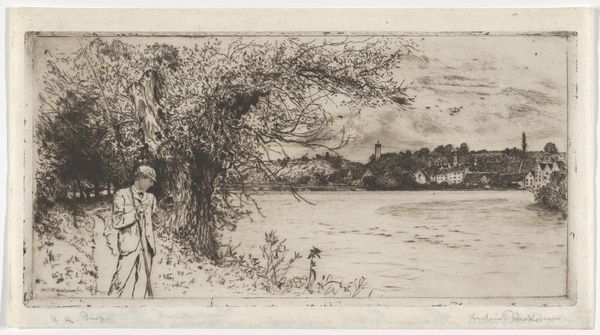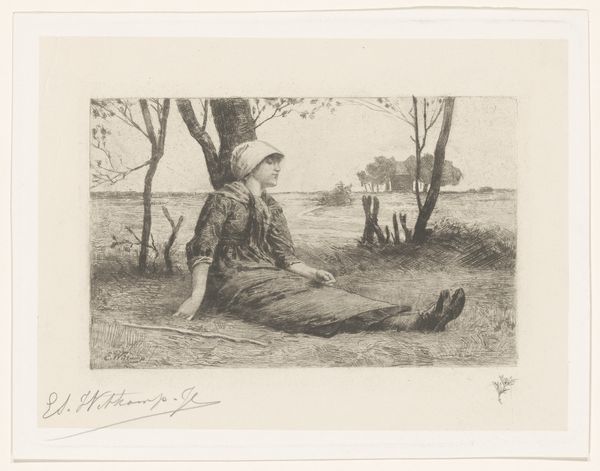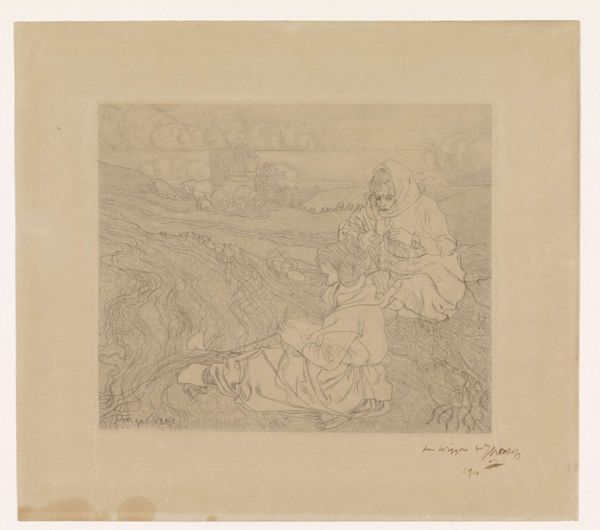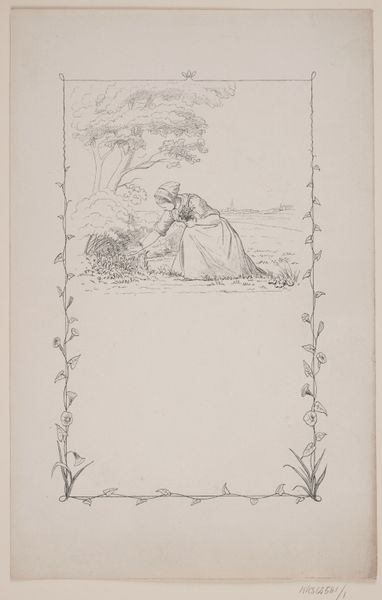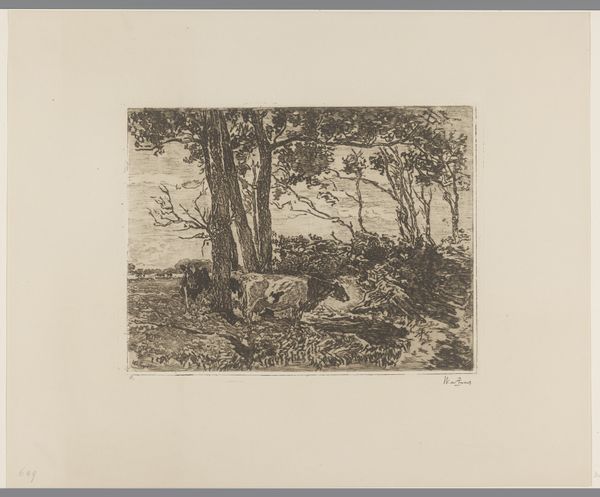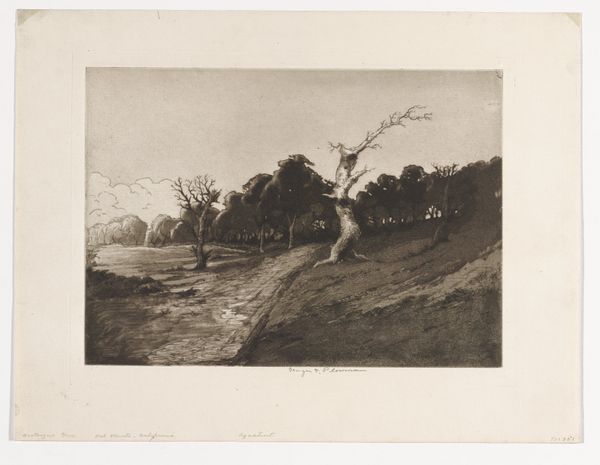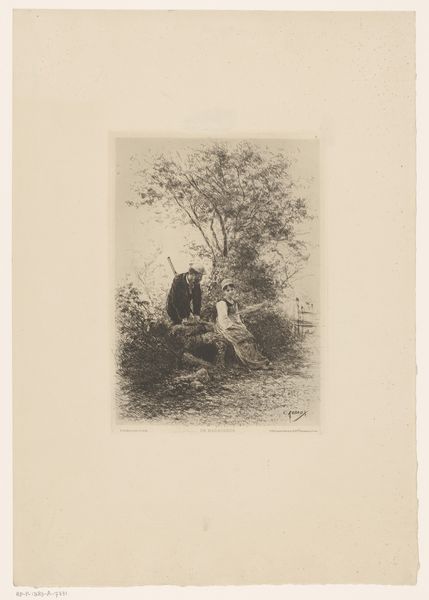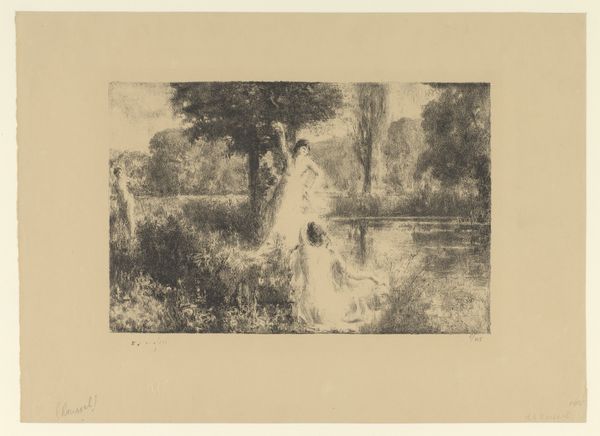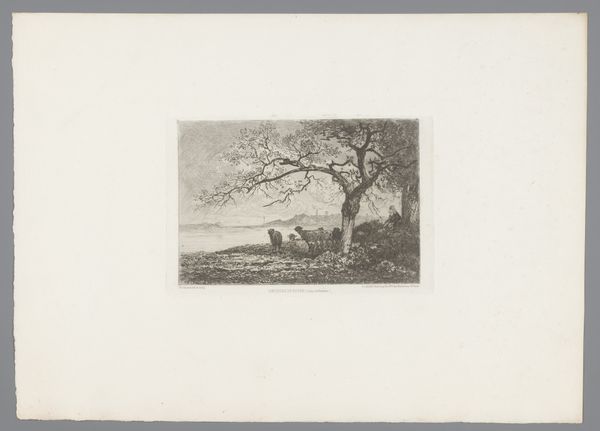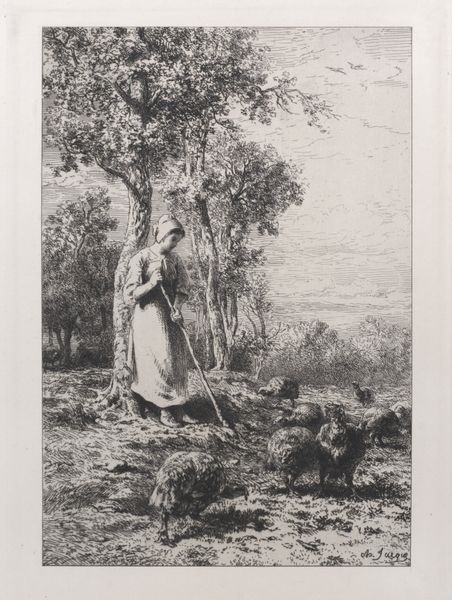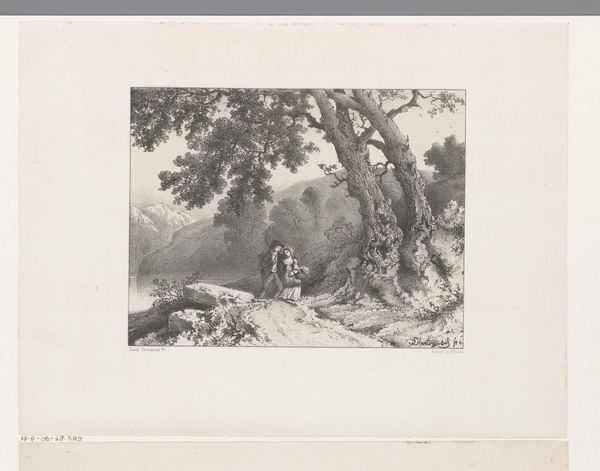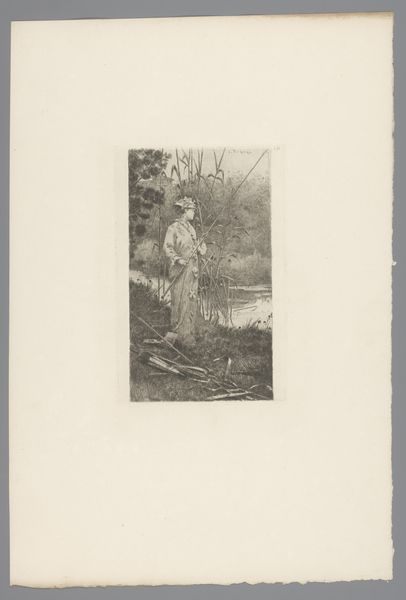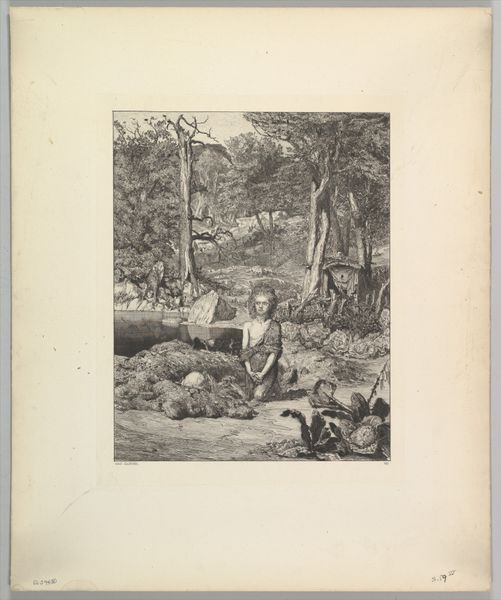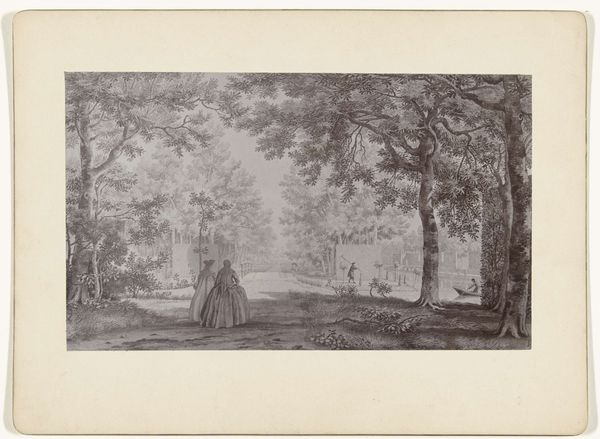
drawing, print, etching, paper
#
drawing
# print
#
etching
#
landscape
#
paper
#
form
#
line
#
genre-painting
#
realism
Dimensions: height 238 mm, width 319 mm
Copyright: Rijks Museum: Open Domain
Curator: This etching, titled "Weide in de buurt van Beuzeval", by Henry Lerolle, invites us into a quiet rural scene. It dates from the period of 1858 to 1913. Editor: It strikes me as a rather melancholic scene. The fine lines create a hazy atmosphere, and the lone figure contributes to a sense of isolation, even in nature. Curator: It's compelling to think about the pastoral idyll alongside the realities of labor and gender. Note the woman seated; is she resting or perhaps positioned in the work that women were confined to? The cow nearby feels emblematic of their connected labor within agricultural systems. Editor: Precisely! Look at how the materials themselves – the etching and the paper – serve the depiction of the working classes. The line work implies reproduction of prints accessible and meant for distribution, a commodity to be consumed, mass appeal from something often unseen, the labor of rural work. Curator: And, perhaps more deeply, this invokes a critique of class structures. Lerolle, through a medium readily reproducible and widely accessible, highlights those very inequalities in social standing and wealth. It opens a space to examine issues of social justice inherent within seemingly gentle rural settings. Editor: The scale of this etching seems important. Its intimacy demands a close look. There’s an interesting contrast, isn’t there, between the artist’s hand, the reproducible medium, and the eventual distribution of that labor and image. It almost mimics the processes within the rural landscapes depicted in "Weide in de buurt van Beuzeval". Curator: This interplay certainly complicates any simplistic reading of the image, and prompts an inquiry into the complex layers embedded in the piece. By situating women and animals within that vast landscape, it is asking whether that labor is inherently, politically different for both and what freedom looks like in such circumstances. Editor: Examining the paper and etching process deepens our understanding and shifts the aesthetic experience towards questioning not just WHAT is portrayed, but also HOW and FOR WHOM that visual exchange occurs. Curator: It does, inviting viewers into dialogue about rural landscapes and the lives of those working within it and what art asks from those looking back. Editor: Exactly. I see it offering insight into class consciousness of that moment through its production itself.
Comments
No comments
Be the first to comment and join the conversation on the ultimate creative platform.
